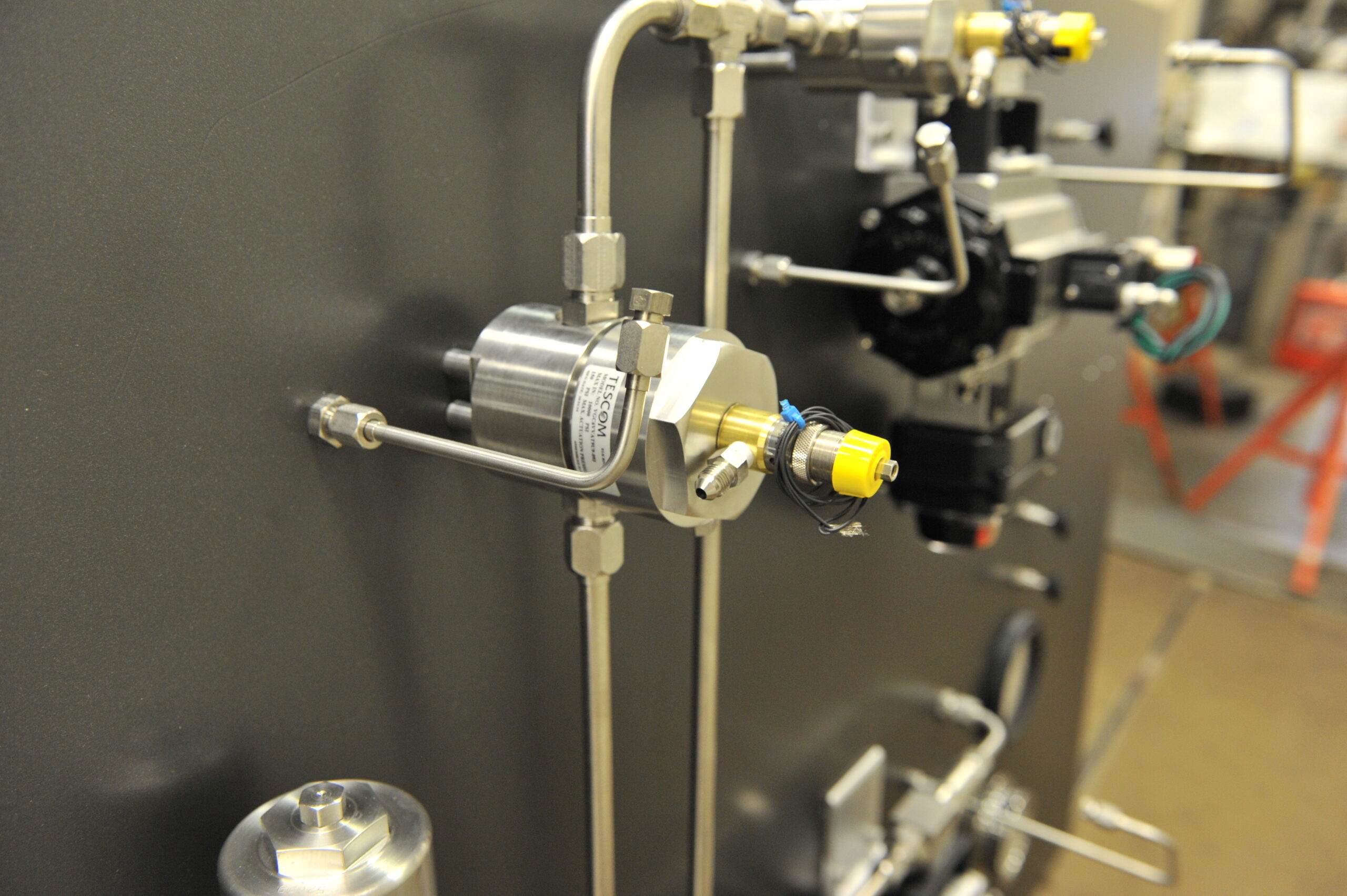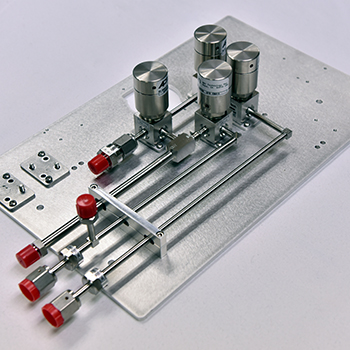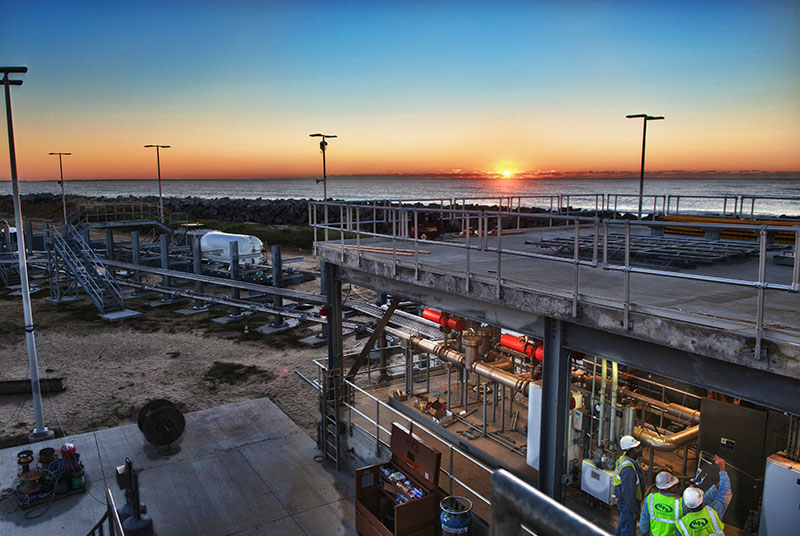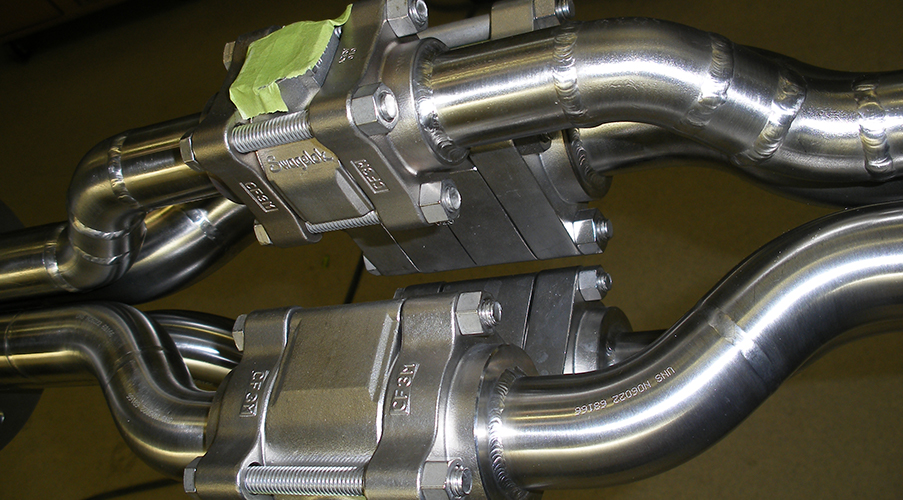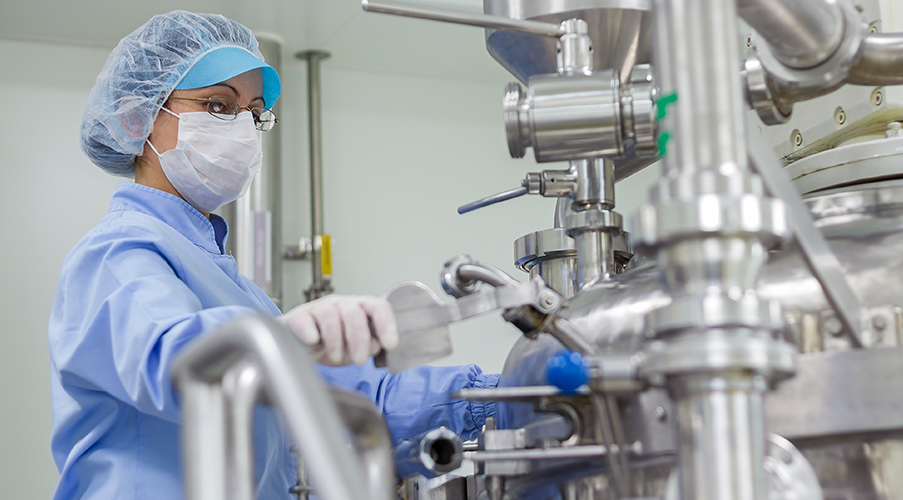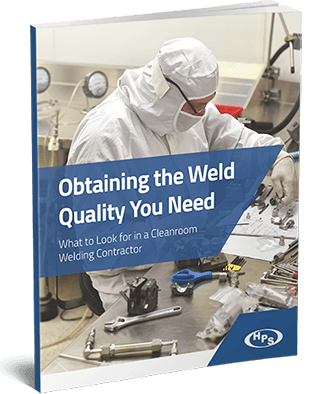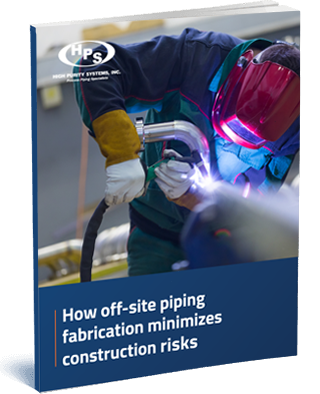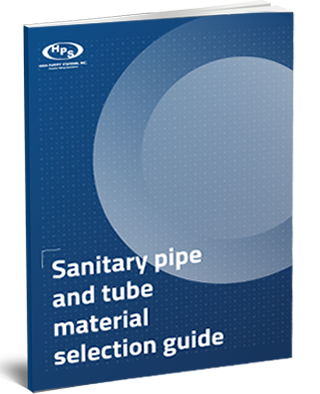Prefabricating industrial piping in a dedicated facility offers several advantages over the on-site alternative, especially during testing and finishing processes.
When performed directly on the job site, these secondary services can hold up productivity, add labor and transportation costs, and can even endanger workers — delaying project completion and, ultimately, overall production. These disruptions can be limited, however, by testing prefabricated pipe in a controlled environment away from the job site.
Below, we’ll take a look at four reasons why your project might benefit from utilizing off-site testing of piping fabrication.
Radiographic Testing or X-Ray Inspection
 Any time piping and tubing have been welded together, a predetermined percentage of the welds must undergo an X-ray test to verify its integrity. Radiographic testing requires that everyone clear the area for safety, which can temporarily shut down the job site, halt the progress of other trades, and add extra costs, as this process must often be done after hours. Also, the testing equipment needs to be moved from weld to weld which can sometimes be cumbersome depending on height and location of the weld joint.
Any time piping and tubing have been welded together, a predetermined percentage of the welds must undergo an X-ray test to verify its integrity. Radiographic testing requires that everyone clear the area for safety, which can temporarily shut down the job site, halt the progress of other trades, and add extra costs, as this process must often be done after hours. Also, the testing equipment needs to be moved from weld to weld which can sometimes be cumbersome depending on height and location of the weld joint.
When contractors choose to outsource fabrication, on the other hand, the x-ray technician is in close proximity to the weld and free to move from one weld to the next without any disruptions or restrictions to accessing the weld location. Only the final, post-installation welds require on-site NDT testing, thereby reducing overall downtime on the site and allowing the owner to be more productive with costs. Sometimes if the contractor uses the same welding personnel that fabricated the piping on-site and the percentage of welds already tested meets the final criteria, onsite X-Ray can be eliminated completely.
Reduce risk, lower cost and guarantee the highest quality work with off-site piping fabrication.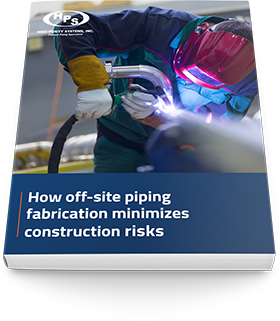
Minimize construction risks with off-site piping fabrication
Pressure Testing
In the oil and gas industry, pipes need to be pressure tested to ensure they’ll hold up in the working environment. This means the pressure must be turned up to nearly the maximum allowable amount — sometimes above 4,000 psi. To ensure worker safety, the surrounding radius must be roped off to keep people away from the testing site. At best, this may cause a temporary halt in productivity; at worst, this can cause defective pipes to fail under pressure.
Performing this test in a controlled environment, however, drastically reduces the construction interference on the job site and keeps workers out of close range of the testing area. Since welds have already passed an X-ray test by the time a system is pressure tested, the final in-service pressure test (performed once the prefabbed piping has been installed) poses a much lower risk than pressure testing the entire system on-site.
Passivation
Off-site passivation — mixing and flowing solutions to apply a protective coating to the interior of the piping — eliminates a significant amount of time and removes the need for additional equipment. For onsite passivation, a third party must bring heat exchangers, pumps, and all necessary chemicals, plus clean up after testing. Technicians must rinse out the lines, as well as transport and dispose of the chemicals, sometimes having to transport these chemicals offsite due to environmental restrictions on what chemicals can be sent to drain — a process that can vary in complexity depending on jurisdiction.
If piping can be pre-passivated before being brought to the site, pieces can be connected together for simultaneous finishing, or even dipped into a passivation tank for an expedited process. In addition to performing a quicker, simpler procedure, an off-site shop will also relieve the owner of the headache of chemical disposal.
FDA Inspection
When a third-party QA/QC inspector comes to a job site to inspect weld quality, they often have long periods of downtime waiting for each weld to be completed before they can inspect the next. If the welds are not inspected in a timely manner, it delays installation of the pipe. However, if the QA/QC inspects the welds at an off-site prefab shop, the contractor will typically accumulate welded pipe in a laydown storage area which allows the inspector to inspect a group of welds all at once, reducing overall project costs and improving productivity.
Learn More
To learn more about how outsourcing off-site piping fabrication can benefit your next project, contact us today.
Contact High Purity Systems
Have a question about a piping challenge? Want to discuss an upcoming project? Let’s talk.




